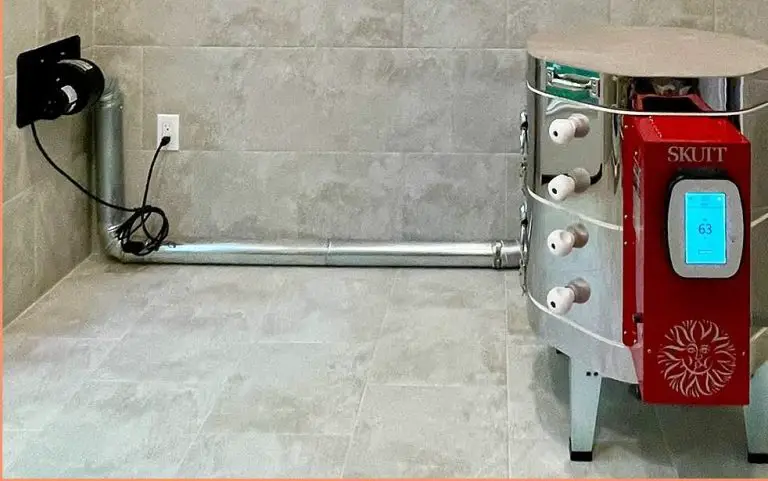How Many Floor Lamps Should You Have In A Living Room?
Lighting is a critical element of interior design in any living room. Proper lighting can create a warm, inviting atmosphere and highlight the best features of the space. It affects both aesthetics and function. The right lighting allows homeowners to perform tasks comfortably while also setting the desired mood.
When it comes to floor lamps specifically, choosing the right number is key to achieving your lighting goals. Too few lamps can leave the room feeling dark and shadowy. Too many can create a cluttered look and harsh glare. The ideal number of floor lamps depends on factors like the room’s size, layout, activities, and style.
This article provides helpful guidelines on determining how many floor lamps are optimal for your living room. It covers lighting purpose, style considerations, safety tips, and specialized lamp options to inform your design choices.
Room Size Considerations
The recommended number of lamps for a living room depends on the size and layout of the space. A general guideline is to provide between 1,000-2,000 lumens of light per square foot in a living room (source). For a small living room of around 100-150 square feet, one floor lamp would likely provide sufficient lighting. For a medium living room of 200-300 square feet, 2-3 lamps is ideal. In a large living room of 400+ square feet, 4 or more lamps may be needed.
Lamp placement should complement the layout and activities in the space. Task areas like reading nooks benefit from more focused light. Ambient lamps can illuminate seating areas and balance overall lighting. Lamps flanking a sofa provide directional light without glare. Corner lamps utilize awkward space while adding visual interest. Place lamps near room entrances to greet and guide guests. Consider layered lighting with table lamps for tasks, floor lamps for ambiance, and ceiling lights overhead (source).
Purpose & Activities
The main purpose of a living room is typically relaxation and entertaining. The right lighting design can enhance these activities. Ambient lighting provides overall illumination for the entire room, while task lighting focuses light on specific areas like reading nooks.
For relaxation, aim for soft ambient lighting from floor lamps or table lamps with dimmers. Position these lamps near seating areas to create a cozy atmosphere for reading or conversing. Downlights also work well for ambient lighting. For entertaining, increase the ambient lighting to brightly illuminate the whole room. Add accent lighting like picture lights to draw attention to artwork or decorative pieces. This source recommends layered lighting – combining ambient, task, and accent lighting – to create a lively space for social gatherings.
For reading nooks, focus task lighting on seating areas using floor lamps or swing arm lamps. Provide enough illumination for reading without causing glare. Position the light source behind or beside the seating to avoid shadows on the book pages. Desk lamps also supply directed task lighting for activities like jigsaw puzzles on coffee tables.
Style & Aesthetics
The number and style of lamps you choose for your living room can dramatically affect the overall decor and aesthetic. According to the Principles of Lighting in Interior Design from Decorious, lighting should complement the interior design and decor. When selecting floor lamps, it’s important to consider the room’s color scheme, furniture style, and overall look you want to achieve.
In general, odd numbers of lamps create more visual interest than even numbers. Having an odd number of floor lamps, such as three spaced throughout the room, can help balance the lighting and decor. The style of the lamps should also coordinate with the room’s aesthetic. For example, rustic bentwood lamps would suit a farmhouse style living room, while sleek metallic lamps fit better with midcentury modern decor.
Follow principles of harmony like repetition to tie the lamps together. Using floor lamps of the same or similar style creates cohesion. You can vary the heights, lampshades, or finishing touches while maintaining harmony through consistent materials and shapes. Place the lamps thoughtfully throughout the room to create a sense of balance and order.
Lamp Styles
There are three main types of lamps used in living rooms – floor lamps, table lamps, and wall sconces. Each has its own pros and cons to consider:
Floor Lamps
Pros:
- Provide overall ambient lighting
- Come in a wide variety of heights and styles
- Can be moved around easily
Cons:
- Take up floor space
- Can be prone to tipping over
Table Lamps
Pros:
- Provide more directed task lighting
- Take up less space than floor lamps
- Come in many decorative styles
Cons:
- Fixed location based on furniture
- Typically don’t provide as much light as floor lamps
Wall Sconces
Pros:
- Save space by mounting to the wall
- Can provide both ambient and task lighting
- Come in a wide variety of styles
Cons:
- Location is fixed once installed
- Wiring and installation can be tricky
When choosing lamp styles for your living room, consider the size of the space, your lighting needs, and the room’s decor. Often a combination of floor, table, and sconce lights works best to create both overall and task lighting. Refer to this source for more on popular living room lamp styles.
Specialized Lamps
Specialized lamps like reading lamps or accent lighting can add both function and style to a living room. Here are some tips on when to use specialty lighting:
Reading lamps are essential for tasks like reading a book or working on a laptop. Position a reading lamp near seating areas to provide a focused pool of light without having to brighten the whole room. Opt for adjustable reading lamps that allow you to direct the beam where needed. According to Parachute Home, swing arm lamps are excellent reading lights for living rooms.

Accent lighting highlights specific areas or features in a living room. For example, install recessed lighting or picture lights to illuminate artwork on the walls. Use directional accent lamps on bookshelves or media cabinets to showcase decorative objects. Accent lighting adds visual interest and draws attention to aspects you want to stand out.
Silhouette lighting behind chairs or sofas creates a cozy, relaxing ambiance. Position floor lamps or sconces behind seating to cast a warm glow and make the furniture stand out. Backlighting adds style and dimension to the living room.
Consider layering ambient, task, and accent lighting. Combining different types of specialty lighting allows you to meet both functional and aesthetic needs in your living room design.
Light Bulbs
When choosing light bulbs for living room lamps, there are a few key types to consider: incandescent, LED, and halogen. Each has their pros and cons.
Incandescent bulbs are the traditional bulb type and provide a warm, cozy light. However, they are not very energy efficient. LED bulbs are the most energy efficient option and last the longest, up to 25,000 hours. They come in a range of color temperatures. Halogen bulbs are similar to incandescent in terms of light quality, but are more energy efficient. However they can run hotter than other options (1).
For living rooms, most experts recommend LED bulbs for their longevity, efficiency, and ability to provide both ambient and task lighting. Choose a warmer color temperature around 2700-3000K to provide a cozy feel. Dimming capability is also recommended for living room lamps to control brightness and mood (2). Avoid compact fluorescent bulbs for living rooms as they have a harsher light quality.
When selecting wattage, aim for about 10-25 watts for ambient lamps and 25-60 watts for reading or task lamps. Consider purchasing smart bulbs if you want to control lighting via your phone or voice assistant (3).
Lamp Heights
Lamp height and placement can have a large effect on your room’s comfort, appearance, and functionality. Here are some recommendations from source on ideal lamp heights and placements for floor and table lamps in the living room:
For floor lamps behind seating like a couch or chair, the lamp height should be 58-64 inches, with the bottom of the shade lining up with seated eye level. This provides ideal task lighting for reading or working. Floor lamps can also flank seating, where 64-70 inches is recommended.
For table lamps, the standard height when placed on an end table or sofa table should match that of a floor lamp, around 58-64 inches. Sources recommend choosing the table first, then selecting a lamp height of 24-28 inches depending on the table height.
Lamps that are too short can seem out of scale and cause glare. Lamps that are too tall may not provide enough light to tasks. Following these best practices for floor and table lamp heights will help create an optimally lit and visually balanced living room.
Safety Tips
Lighting plays an important role in keeping your home safe. When setting up floor lamps, consider the following tips:
Ensure lamp cords are tidy and out of the way to avoid tripping hazards. Do not run cords under carpets or across doorways. Check cords for fraying or damage and replace if necessary. Consider cordless floor lamps to eliminate hazards from cords altogether (Warehouse Lighting).
Properly illuminate stairways with floor lamps or wall sconces. Position lighting to avoid glare in the line of sight when going up and down stairs. Use bright bulbs of at least 60 watts. Place lamps at the top and bottom of staircases (Technolamp).
Avoid creating glare that can be hard on eyes and cause safety hazards. Position floor lamps away from TVs and computer screens. Use diffusers, shades or indirect lighting to soften harsh light. Install dimmer switches to adjust brightness as needed (Warehouse Lighting).
Conclusions
When determining the ideal number of floor lamps for your living room, there are a few key factors to consider. The size and layout of the room, the primary activities taking place, your decor style, and the types of lighting needed should all influence your decision.
In most medium to large living rooms, 2-3 floor lamps is usually sufficient to provide good overall ambient lighting. For larger spaces, additional task lighting may be needed in seating areas or corners. Smaller living rooms may only require 1-2 lamps. The goal is to have layered lighting that fills the room, avoids overly dark spots, and lets you adjust lighting based on the task or mood.
Classic styles like mid-century modern floor lamps pair nicely with many decors, while unique sculptural lamps can make a bold style statement. Choosing the right lamp heights, bulbs, and placements will ensure your living room feels inviting, functional, and safe. With some forethought into your specific needs, you can create a warm and welcoming living room environment with properly placed floor lamps.






